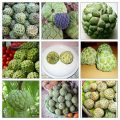Rose (Rosa sp) is described as the queen of all flowers because of its beauty and form. In the Philippines, it is one of the favorite flowers because of its varied colors, fragrance, and long lasting quality. It is considered one of the world’s oldest and decorative horticultural plants. This is evident from the widespread interest in it as a home garden flower and from the national popularity as a cut-flower for all occasions.

Type of Roses
Floribunda – about 1.5 to 2.0 feet high, prolific, either single of cluster in one stem.
Hybrid tea – about 3 to 6 feet tall that produce large flowers.
Grandiflora – resembles tall floribunda with flowers as big as hybrid tea but much larger than floribunda.
Miniatures – sometimes called pitiminies, which are very short, bushy and profusely producing tiny button sized flowers.
Cultural Management
Methods of propagation
Cutting
Marcotting/Inarching
Budding
Grafting
Soil Requirement
Roses thrive well in clay loam soil enriched with high organic matter. In potted roses, a soil mixture of 1:1 part manure, soil and compost can be effectively used.
Water requirements
The plants should be watered early in the day and late in the afternoon to prevent the incidence of fungal diseases. The soil must be kept moist to increase vegetative growth and reduce the incidence of nonflowering shoots.
Fertilizer requirements
Organic fertilizer and complete fertilizers are basally applied into individual holes prior to planting. Ammonium fertilizers are also applied on roses.
Climatic Requirements
Roses grow well in areas where day temperature is 24 – 28°C and night temperature is 15 – 18°C. An increase in temperature affects the flower development of roses:
Flower color has the tendency to fade.
The number of petals drops.
The stem length decreases.
Pinching
Pinching is done to coincide with the peak demands for the production of long stemmed blooms.
Bending
Bending is done six weeks after planting to increase the number of flowered stem. It is also done when the shoots are not so good, when there is enough shoots and leaves and done near the grafting point.
Pruning
Pruning is the cutting off or removal of unwanted stems and branches to rejuvenate the plant and improve its yield.
Harvesting
For distant market, only the unfurled flowers should be harvested. For the nearby markets, the fully bloomed flowers should be harvested.
Pest Control
Aphids, mealy bugs, spiders scales and ants usually infect roses. Spraying roses with malathion, decis, tamaron, thiodan, folidol, karate and other insecticide could be used. Black spot is a common disease of roses. The infected leaves and stems should be removed and burned. Spraying with fungicide should be done.
Post Harvest Handling
Sorting and Grading
The flowers are immediately sorted and graded according to sizes:
Class A – larger flower with long stem
Class B – medium sized flower
Class C – small flower with short stem
Reference:
Bureau of Plant Industry Technoguides
Source: bar.gov.ph







Unemployed Pinoys can earn money while working at home. just an internet and pc!
Unemployed is Brave and a choice to be a Freeman.
Join us today at www.unemployedpinoys.com